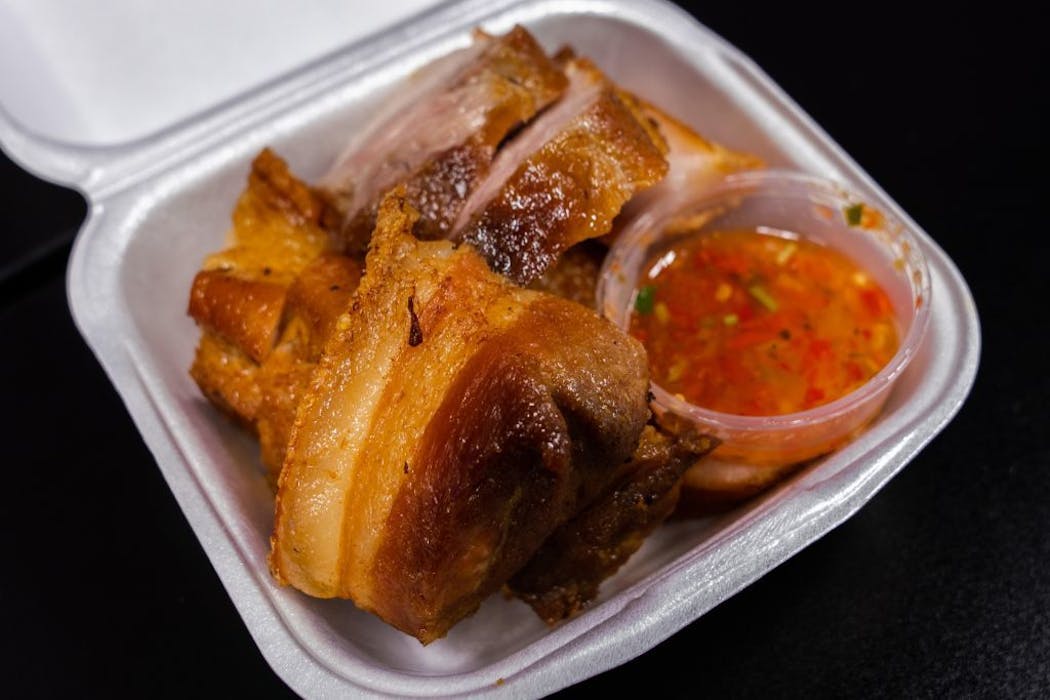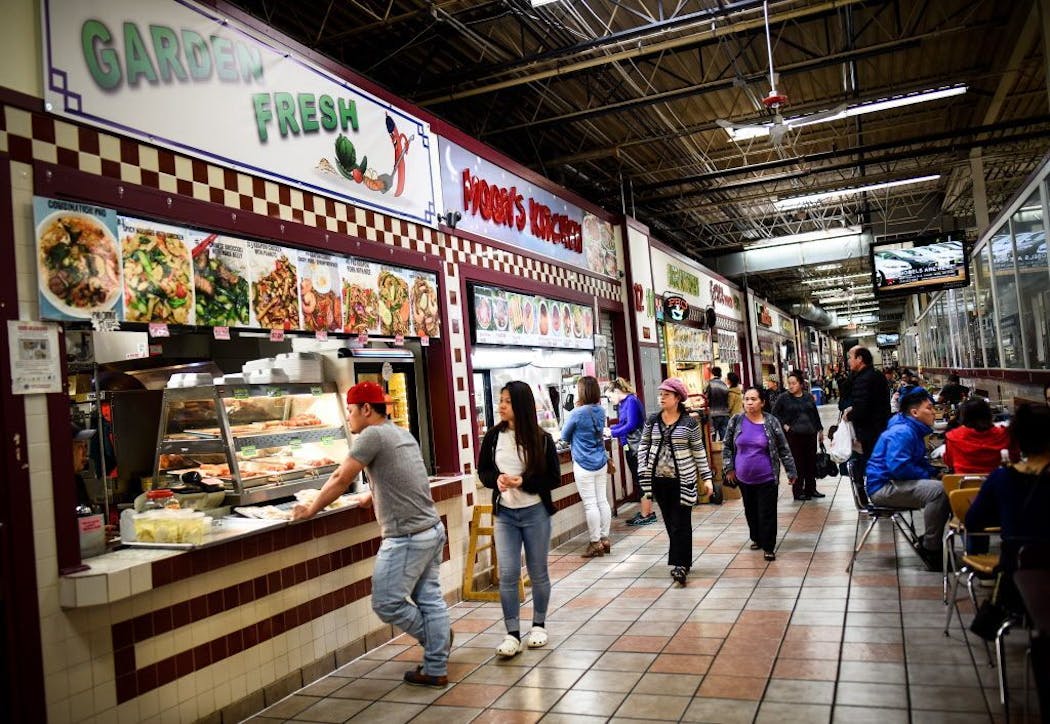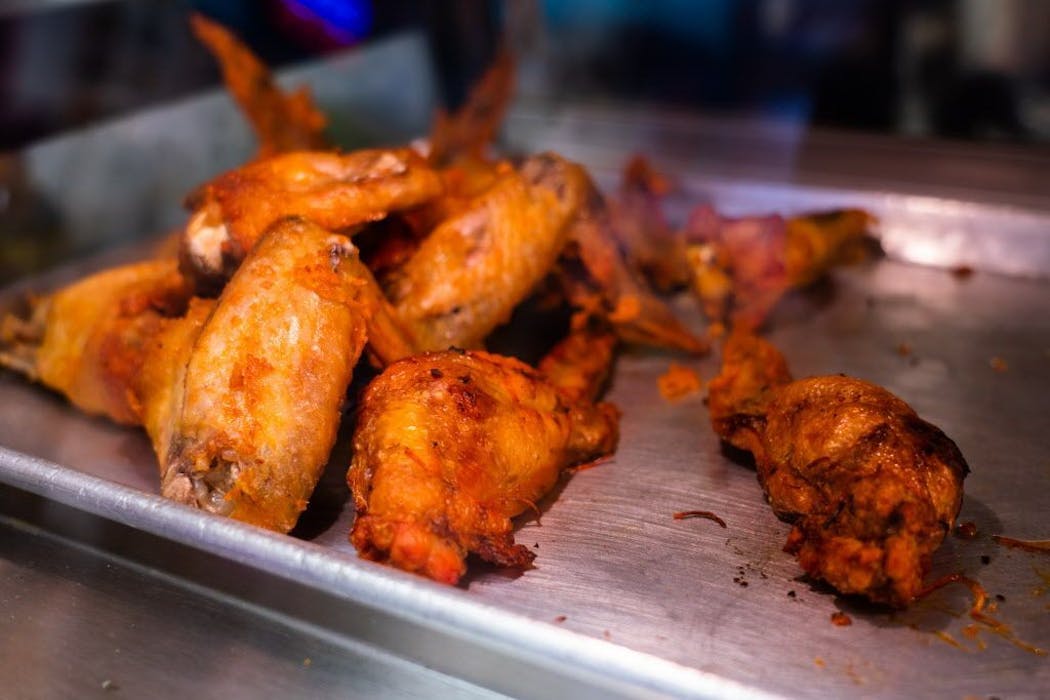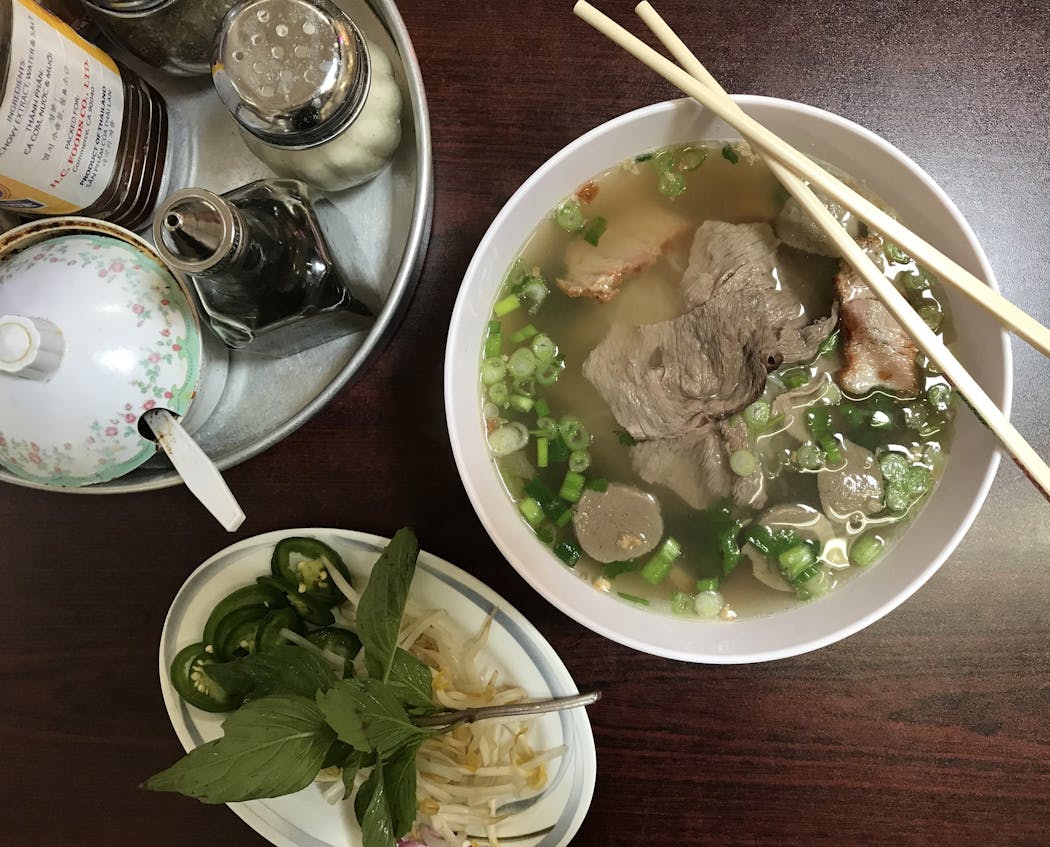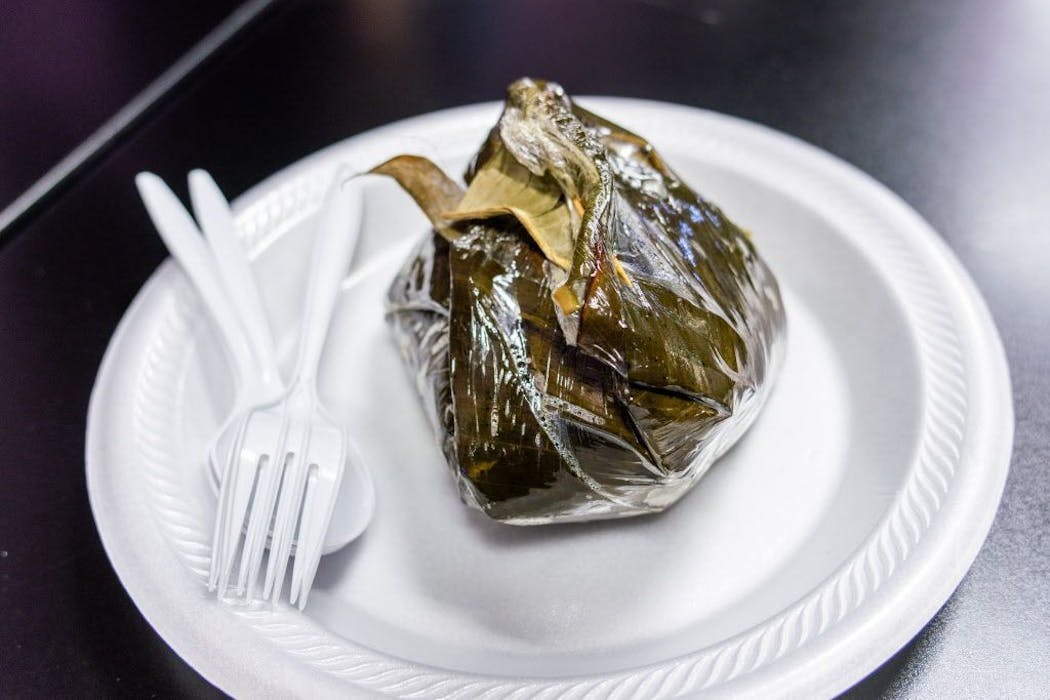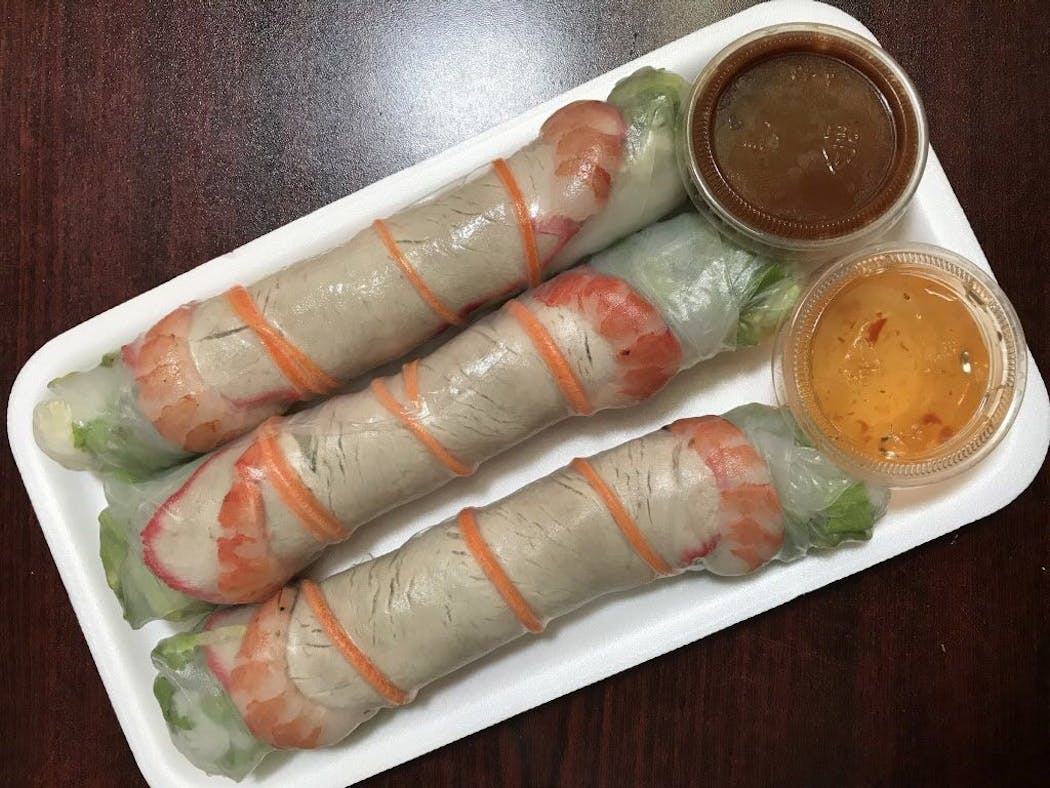The food courts in St. Paul's two Hmong markets — Hmongtown Marketplace and Hmong Village — are among the state's top culinary gems.
With massive, warehouse-style footprints, both offer a maze of clothing, kitchenware and DVD shops, pharmacies, barbers and huge produce sections featuring bags of colorful Thai chiles, long lemongrass stalks, spiny rambutan fruits and much more.
In the summer, Hmongtown Marketplace, which debuted in 2004, holds a large outdoor farmers market where patrons can purchase everything from live plants to live chickens. In June, it hosts a festival packed with live entertainment. Hmong Village, which opened in 2010, is usually abuzz with activity, as well.
For the Hmong community in Minnesota — some 80,000 strong — the markets act as gathering places.
"For Hmong people, there's no country to go back to," said Toua Xiong, the owner and founder of Hmongtown Marketplace. "So it isn't just a place to shop and do business. It's a place to hang out with friends and socialize."
But there is plenty for native Minnesotans to love, as well. The vibrant collections of pho and curry shops, meat barbecues, bakeries and other food stalls mimic the street markets that form a huge part of Southeast Asian culture, and give hungry diners a wealth of options to choose from — much of which they won't find elsewhere in the state.
"I tell people you don't have to buy a ticket to Asia," Xiong said. "You can just come here and feel like you're there. The food here is so authentic — it's not like the typical restaurants, which have become so Americanized."
Hmong food combines the cuisines of Thailand, Laos, Vietnam and China because the people migrated throughout Asia after they were forced to leave ancient China. Eating your way through all the offerings at the markets is a worthy pursuit.
Big slabs of pork belly, foot-long sausages and slow-cooked beef roasts that practically melt in your mouth make for a meat lover's paradise. Those with a seafood penchant need not look past the whole fried tilapia or the steamed catfish (called mok pa), tucked into a banana leaf along with herbs and spices. There are also soups, stews and noodle dishes, such as pho and khao poon — a bowl of roasted pork, cabbage, noodles and banana blossoms, swathed in a vibrant curry sauce.
"I call it Hmong spaghetti," Xiong said with a laugh.
Here, even vegetables find ways to be exciting. Papaya salads vary dramatically at many stalls, with various vegetables, spices and seafood used. Most vendors, making the salads fresh to order, will allow patrons to taste a bit of the finished product before serving it, similar to restaurants allowing a customer to sample the wine before agreeing to the bottle.
If you're really looking to try something unique, consider the chicken feet or the pork intestines, both staples of Hmong cuisine. For something exceptional that is also a little familiar, try the stuffed chicken wings, which are sort of like egg rolls but with the chicken's natural meat and skin instead acting as the crispy wrapper.
"They're so good," Xiong said. "But they take a long time to make. They have to take one of the bones out [of the wing] and then stuff it with the noodles and the salad."
You can find many similar dishes throughout the markets, but each chef has his or her own take using different seasonings and techniques.
And if you're a spice-phobe, don't worry. Although many items arrive with a small cup of red chili sauce on the side — and this packs a punch — most dishes won't blow eaters away with heat on their own.
"Traditionally, Hmong food is very spicy because it originates from Thailand and Laos," Xiong said. "But when we came to Minnesota, that all kind of went away. Now, it's not that spicy."
Don't forget to save room for dessert. Both markets have bakeries overflowing with sweet pastries, pillowy doughnuts and flavored rice. But your best option might be one of the dessert drinks filled with coconut milk, fruits and colorful tapioca pearls.
"I like to tell the kids they're fish eggs," Xiong said, winking.
OUR FAVORITES:
Here are ten of our favorites from both Hmongtown Marketplace (217 Como Av., St. Paul, hmongtown marketplace.com) and Hmong Village (1001 Johnson Pkwy., St. Paul, facebook.com/Hmong-Village):
Stuffed chicken wings
Imagine an eggroll stuffed inside a chicken wing, using the crispy skin as the wrapper. Wow!
Find it: 5-Star Deli, Hmongtown Marketplace, $3 each
Beef pho
A flavor-filled bone broth foundation is filled with vermicelli noodles and thinly sliced beef and topped with herbs and sprouts.
Find it: Her Kitchen, Hmong Village, $6
Mok pa
Gently steamed catfish is nestled into a banana leaf with lemongrass, ginger and dried spices.
Find it: Hmobb Kitchen, Hmongtown Marketplace, $6
Spicy pork sausage
Foot-long casings (diners can also order Thai-style or Lao-style) are sliced and accompanied by a mountain of purple rice.
Find it: Sida Kitchen, Hmong Village, $6
Chicken meatballs
Minnesotans might be reminded of the State Fair: massive, juicy meatballs are skewered onto sticks.
Find it: 5-Star Deli, Hmongtown Marketplace, 3 for $5
Spring rolls
It's tough to go wrong with a pork, shrimp, noodle and veggie-packed appetizer, many of them arranged into pretty designs.
Find it: Xieng Khoung Kitchen, Hmong Village, 3 for $4
Pork belly
It's bacon, on steroids. This massive slab is more steak than breakfast side, and it comes with rice.
Find it: Mr. Papaya, Hmongtown Marketplace, $8
Papaya salad
Made fresh to order with vegetables and crab paste; the vendor will ask your preferred spice level.
Find it: Green Papaya, Hmong Village, $6
Nab vam
Also known as the tri-color dessert drink, this coconut milk sipper with tapioca pearls can be addicting.
Find it: Twin Tropic Cafe, Hmongtown Marketplace, $3
Jian dui
These Chinese rice flour doughnuts, topped with sesame and filled with sweet bean paste, make the perfect finale.
Find it: Kad's Deli, Hmong Village, $1

The 5 best things our food writers ate this week

A Minnesota field guide to snow shovels: Which one's best?

Summer Camp Guide: Find your best ones here

Lowertown St. Paul losing another restaurant as Dark Horse announces closing

